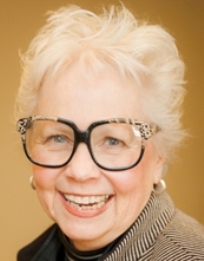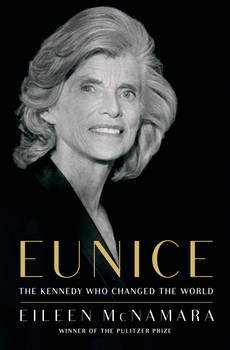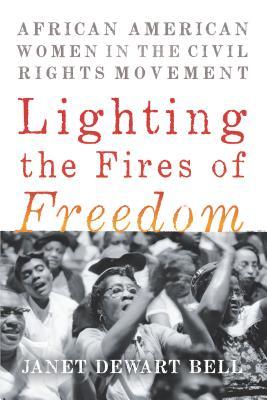Some New Thoughts About Mother's Day
I have decided that Mother’s Day, in the States traditionally
celebrated on the second Sunday of May, has the potential to make as
many women unhappy as it does to make them feel loved and revered. In
fact, before the service started in church this last Mother’s Day, I
leaned back to a friend in the row behind me and said as much. To my
delight, the lead pastor of our church, Jeanne Stephens, created an
elegant blessing for the mothers in the congregation, but she was
especially careful to also include all those for whom Mother’s Day was
a day that caused mourning rather than joy. Good job, Jeanne!
This
realization hit me early in my marriage when I was a young mom with
four wonderful but often neglectful kids. “The kids haven’t done
anything for Mother’s Day!” I would complain to my husband. “You have
to coach them,” I would explain. This was invariably answered by the
proverbial husbandly defense, “But you’re not my
mother!” David never really made the connection to the fact that his
offspring recognized him on Father’s Day, because I reminded them Dad’s
Day was on the near calendar. (This in spite of the fact that David
Mains is not my father.)
Due to this yearly in-house male resistance, I finally figured—Why am I making myself unhappy over this highly over-commercialized day anyway?
(The National Retail Federation’s spending survey for Mother’s Day
indicated some $23.6 billion was spent in 2017 on United States moms.) Ah-hah!,
I thought. Plan a day for yourself. Do something you want to do. Spend
a few hours enjoying some activity that brings solace and delight to
your own soul. This year, for instance, I’m giving myself the
gift of signing up at the local community college for two courses in
Advanced Gelli Printmaking: Digital Photo Transfers and Homemade
Texture Rolls. Decades ago, I decided I had the power to design my own
Mother’s Day trajectory and avoid any of the blues that can bite moms
due to offspring neglect.
“Don’t spend any money on me,”
I’ve instructed my adult children. A phone call or a card will be
enough. Between nine grandchildren and four adult children (and their
various spouses), our cumulative offspring’s Mother’s Day batting
average is about 50%. Not bad. I am slightly smug that the Mains clan
is not contributing to the national GDP due to the over-hyped,
over-sentimentalized advertising campaigns of the greeting-card
industry, restaurateurs and local florists—at least, they’re not
contributing to it on my behalf.
There are also deeper
considerations I’ve learned through the years regarding responses to
Mother’s Day. While designing a healing liturgy with a team of women
who had all experienced childbirth losses, I became aware that Mother’s
Day was, for many, a painful event. “I don’t go to church on that
Sunday,” several explained. It just hurts to recognize other mothers
when you have suffered childbirth losses or have not been able to have
children or have never married. It’s not that you’re not happy for all
the friends who are being honored. It’s just that the wounds from past
pains are still real but often unrecognized by others or just not
understood. On every Mother’s Day since creating the gentle healing
liturgy, I always hear my friends’ voices, “It’s just too painful.”
Recently,
I’ve had some other radical thoughts about Mother’s Day and how it
might be used to make a difference for other mothers in the world and
in a way that wouldn’t evoke pain for those who suffer silently. Partly
this is because I’ve been writing about and consequently researching
the dilemma of women worldwide. Partly this is because I served for
eight years on the board of directors for a faith-based international
health organization that had developed a remarkable training program to
train women to train women. Partly this is because for much of my life
I worked in women’s ministries and consequently, co-wrote a book titled
Child Sexual Abuse: A Hope for Healing.
To
begin thinking about my idea for a radical approach to Mother’s Day,
let’s begin with what is called the “missing women quandary.”
According
to demographers, there are some one hundred million women missing in
the world. This phenomenon was first noted by the Nobel Prize-winning
economist Amartya Sen, in an essay he published in 1990 in The New York Review of Books.
Through the following decade he continued to expand his exploration and
discoveries that were published in many subsequent academic works. The
present estimates of between 90 and 101 million “missing women,” and
the various causes for the phenomenon, have been studied and debated
and analyzed by demographers and social scientists in the years since
Sen’s original announcement, but most agree now to the reality that
millions of women worldwide are missing.
This number is
determined by what is called the sex ratio—a means of measuring the
number of males born in a society against the number of women.
Generally, the ratio between male and female births is slightly biased
toward the masculine sex. Due to some kind of equilibrium matrix,
nature allows for, on average, some 105 male births for every 100
female births.
Demographers propose this is because men are
at a higher risk of dying for a variety of causes—violence, accidents,
injuries, war casualties—and in time, the sex ratio of a given
population for any particular age set begins to equalize. However,
today, when what should be a normal equalized sex-ratio is measured in
many current populations, particularly in developing countries in Asia,
as well as in the Middle East and in parts of Africa, results show a
divergence from the norm. The current sex-ratio measured against what
should be the normal sex-ratio in China, for instance, reveals—not a
ratio that is beginning to become even between the sexes—but an
expanding men-to-women ratio of 1.06 men per 1 woman, which is far
higher than in most countries. Researcher Amartya Sen concludes: “These
numbers tell us, quietly, a terrible story of inequality and neglect
leading to the excess mortality of women.”
There is now a
general consensus as to the reasons why sex ratios are teetering on a
wild imbalance in various countries of the world: sex-selective
abortions, female infanticide, inadequate healthcare and nutrition for
female offspring, lack of pregnancy and childbirth education, and the
now booming sex-slave trade industry. Nicholas Kristoff and his wife
Sheryl WuDunn report, “In other words, far more women and girls are
shipped into brothels each year in the early twenty-first century than
African slaves were shipped into slave plantations each year in the
eighteenth or nineteenth centuries.” This horrendous reality is
verified by the Foreign Affairs
journal, and the above husband-and-wife writing team estimate some 3
million women and girls (very few boys) worldwide are entrapped in the
sex slave trade.
The issue of malnourishment also takes a
generational toll. When children are malnourished, and historically
girls are malnourished, they give birth to underweight babies, whose
bodies are then more susceptible to disease. Malnourished girls become
malnourished women, prone to childbirth losses—miscarriages,
stillbirths, infant deaths—and multiple pregnancy complications
resulting in mortality. In India, for instance, demographers find that
by and large, the main cause for female deaths is cardiovascular
disease, diseases of the heart and blood vessels that can lead to heart
attacks or strokes. Medical researchers have discovered a close
relationship between low birth weight and eventual cardiovascular
diseases at a later age.
Maternal mortality refers to the
percentage of women who die in childbirth. Some 99% of women in the
world who die giving birth are from poor countries. This is determined
by another ratio—the MMR, or the maternity mortality ratio—the number
of maternal deaths for every 100,000 live births.
The MMR
measures the potential of death per pregnancy. Another ratio measures
death probability over a lifetime of multiple pregnancies. The lifetime
risk of dying in childbirth is 1000 times higher in a poor country.
Kristoff and WuDunn, in their comprehensive book Half the Sky: Turning Oppression Into Opportunity for Women Worldwide, write, “This should be an international scandal.” Kristoff/WuDunn quote some alarming statistics:
• The
highest maternal mortality risk in the world is the African country of
Niger. Here the lifetime risk of dying in childbirth is 1-7;
• In sub-Saharan Africa, the lifetime risk of death is 1 in 22;
• India is 1 in 70;
• The U.S. is 1 in 4,800, which is actually a high ratio for a developed and wealthy country;
• In Italy, the lifetime risk is 1 in 26,000;
• In Ireland, the chance of dying in childbirth is 1 in 46,000.
Morbidity
is different than mortality. Maternal morbidity deals with injuries in
childbirth, which occur even more frequently than maternal mortality.
The book Half the Sky, a
report on the worldwide status of women written by two Pulitzer Prize
winners, concentrates pages on the occurrence of morbidity,
particularly fistulas; in this case rectovaginal fistulas, which are
often the result of trauma in childbirth. Here a tear between the
vagina and rectum (also caused by rape) is left untreated where there
is inadequate healthcare. These women, many now mothers, having
successfully delivered an infant, become outcasts in their villages
since they cannot control urine or feces flow.
“For every
woman who dies in childbirth, at least ten suffer significant injuries
such as fistulas or serious tearing. Unsafe abortions cause the deaths
of seventy thousand women annually and cause serious injuries to
another 5 million. The economic cost of caring for those 5 million
women is estimated to be $750 million annually. And there is evidence
that when a woman dies in childbirth, her surviving children are much
more likely to die young as well, because they will have no mother
caring for them.” — Kristoff/WuDunn
All these factors are
symptoms of one major toxic cause: female discrimination—women in a
cross section of wide-ranging cultures are not valued. In fact, they
are actively abused, neglected and abandoned through countless
engrained cultural practices that deem women as inferior to men and
ensure they stay in subsistence-like conditions.
I have this
gnawing intuition that Mother’s Day might be utilized as a day to
contribute positively and substantively to the plight of women
worldwide. I have some ideas that are stewing in the creative caring
part of my soul.
Would love to hear about any of your ideas.
Karen Mains
Article originally published by Gospel for Asia on their Patheos platform.
NOTICES
Where Oh Where Did the Slowing Down Go?Karen’s
hard drive crashed last month, and in the middle of a very long
recovery from surgery in February, she’s dropped the ball on replying
to emails and sending notices to a prayer team of folk who have kindly
upheld her in prayer these last few years. In addition (and
ironically), she sent copies of the book Slowing to several folk who
were interested in taking a teleconference journey together to discuss
the meaning of (and the necessity for) slowing down our lives. The
contact list from the old, now-defunct (and replaced) computer may be
revived, but in the meantime, let this explanation be a way of saying,
“Sorry!”
If you were on that list, and have received a book,
will you send an email saying, “Wondered what had happened?” We’ll try
to launch the discussion on slowing this summer if we can gather the
names again.
Reminder!
The Soulish Food e-mails are
being
posted biweekly on the Hungry Souls Web
site. Newcomers can look that over and decide if they want to
register on the Web site to receive the biweekly newsletter. You might
want to recommend this to friends also. They can go to www.HungrySouls.org.
Hungry Souls Contact InformationADDRESS: 29W377 Hawthorne Lane
West Chicago, IL 60185
PHONE: 630-293-4500
EMAIL: karen@hungrysouls.org
|
|

Karen Mains
I have this gnawing
intuition that Mother’s Day might be utilized as a day to contribute
positively and substantively to the plight of women worldwide.
BOOK CORNER
 Eunice: The Kennedy Who Changed the World Eunice: The Kennedy Who Changed the World
by Eileen McNamara Lighting the Fires of Freedom
by Janet Dewart Bell
Karen
is on this women’s activist kick and has delighted in reading more
in-depth research about the women we know that we really don’t know.
The first book, just released, is titled Eunice: The Kennedy Who Changed the World and is written by Pulitzer Prize winner Eileen McNamara. It’s easy to think when faced with a new Kennedy tome, Really—another book on some member of this family? How many more can possibly be published?
The truth, however, is this: We really don’t know Eunice Kennedy
Shriver; the sister of John and Robert and Ted Kennedy, we only know
about her. Raised in a generation where the women were expected to back
the men by a father who was determined one of them would be President,
Joe Kennedy Sr. discouraged his daughters’ plans to take courses that
would allow them to follow professional careers.
Some back-cover copy might intrigue a reader’s interest:
Larry Tye, the best-seling author of Bobby Kennedy: The Making of a Liberal Icon,
writes, “McNamara gives us what’s been missing in our vision of
America’s First Family; a look at the woman who defied Joe Kennedy’s
absent expectation for his daughters, an appreciation for how Eunice
made the ignored rights of the intellectually disabled into one of the
great civil rights causes, and reason to believe the implausible claim
that it was Eunice—not her more celebrated brothers Jack Bobby, and
Ted—who crafted the Kennedy’s most monumental legacy.”
John A Farrell, the author of Richard Nixon: The Life,
comments, “Spectacular! Who better to write such a terrific biography
of Eunice Shriver than Eileen McNamarra who devoted her own Pulitzer
Prize-winning career to giving a voice to victims and the
disadvantaged. In McNamara’s piercing reporting and lovely prose, the
neglected story of the Kennedy brothers’ indomitable sister gets told
for the first time.”
In contrast to this one amazing woman is the compilation of interviews conducted by Janet Dewart Bell and recorded in her book Lighting the Fires of Freedom
with African-American women, some still alive, who were major players
in the civil rights movement. Unsung, many unknown, most unrecognized,
and in their own voices, they were nevertheless co-creators of a
movement that went far beyond just impacting the black community in the
United States.
The contrast between Eunice
Shriver and these other women is stunning, but despite difference in
class and advantage and connection, there are also remarkable
similarities—one being a determination to make a difference no matter
the cost.
Rashad Robinson, the executive
director of Color of Change, writes: “These stories of perseverance,
love, loss, inspiration, and strategy add to the songbook of the civil
rights era, allowing us to hear and model our newly revived movement
for justice on the sharp, passionate, and unforgettable voices of the
women whose ideas were so transformative.”
Letty Cottin Pogrebin, the co-founding editor of Ms.
magazine, informs us, “This compelling oral history captures the unique
voices of nine intrepid women who, each in her own way, contributed
gifts, love, strength, strategy, spirit, and a formidable personal
commitment to the struggle for racial rights and dignity. You’ll wish
you’d marched side by side with every one of them.”
An outstanding quote for our days from Diane Nash, one of the voices in
this book: “Do not depend on elected officials to make the necessary
changes in society. I think if we had waited for elected officials to
desegregate the lunch counters and buses and get the right to vote in
the South, now fifty years later, I think we’d still be waiting.”
These two books naturally challenge the reader to question, Have I done enough, despite difficulties, to make a difference in the world?
Buy Eunice: The Kennedy Who Changed the World from Amazon.comBuy Lighting the Fires of Freedom from Amazon.com
|


